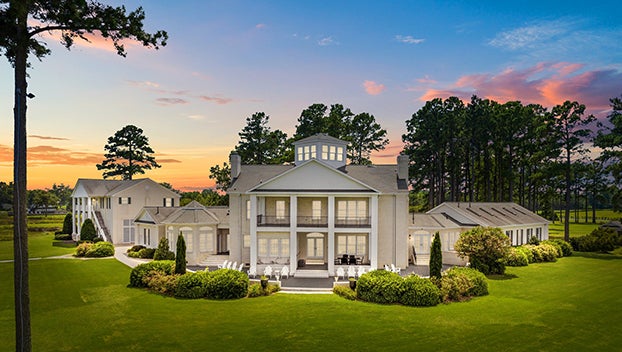House a preservation project waiting to happen
Published 5:19 pm Thursday, September 1, 2016
It can be easy to miss this little jewel of a house sitting near the corner of West Second and Bridge streets. But once one has seen it, the impression of stateliness in a small package is what sticks.
This circa-1935 home is in a unique position — unique because it’s been empty for a while; it’s wedged between two sections of Brown Library parking; and it’s owned by the City of Washington. The home itself is unique, as well, according to John Wood, a restoration specialist with North Carolina State Historic Preservation Office.
“From a stylistic standpoint, this house is what’s called a period cottage,” Wood said. “It’s a combination of Tudor Revival and Colonial Revival on a smaller scale.”
Wood said this style was popular in the decade between 1910 and 1920, though this home, built for Henry Clay Carter III and his wife Marjory, was built in 1935, according to Emily Rebert, community development planner with the City of Washington.

SOUTHERN CHARM: A living room, complete with ornate fireplace mantelpiece, leads out to a tiled porch enclosed at some point during the home’s life.
“They’re built out of quality materials that you don’t find today — the detail work, you don’t really get in houses today,” Wood said. “This house is in extremely good shape, not only from a structural standpoint, but its historic integrity. … The ones that are significant and have integrity are the ones you want to protect.”
In this case, protection would include a solid brick house, one where the pitch of its roof denotes the Tudor influence; the mantelpiece and stairs, its Colonial Revival roots.
Interesting, and sometimes unusual, architectural details abound: a banister and balusters ending in a swirl at the base of the stairs; ceramic Art Deco fixtures; a hideaway beneath the stairs; kitchen cabinets built into the wall; brick arches on what was once a porch but was likely enclosed in the 1940s to create more interior space for a growing Carter household. In addition to the Carters and their two children, a governess, mother-in-law and aunt also lived there, Rebert said.
It is in remarkable shape, though its future is unsure.
In August 2015, the City of Washington paid $80,000 for the property. Since it’s adjacent to the library, there was some talk by city officials of the house being used for the expansion of Brown Library’s Summer Reading Program, which in recent years has outgrown the library and moved to the First United Methodist Church across West Second Street, according to the Washington Planning and Development Director John Rodman. But the house needs a little more cosmetic work than some are willing to take on, Rodman said.
“We’ve talked about a number of uses, but I don’t know that (the city) has settled on anything yet,” Rodman said. “They haven’t said anything about demolition.”

OUTDOOR TO INDOOR: The porch was once framed with brick arches, but was likely enclosed in the 1940s to account for a growing household.
One option could be to give the house away to someone willing to move it to another location. However, moving the house does have a historical impact, because it’s not just the structure, but its setting, that determines its historical significance, according to Wood.
“The setting is part of the significance. If you find someone to move it, or you demolish it, it degrades the quality of the historic district,” Wood said. “Ideally, it should stay where it is. In any historic preservation project, moving it is the last resort.”
Rodman said if an interested part stepped forward, the city would certainly consider letting it go.
“The city would love for somebody to do that,” Rodman said. “I’m sure they would give the house to someone if they moved it.”

ART DECO: Ceramic fixtures from the Art Deco period abound in the bathrooms of this circa-1935 house.






